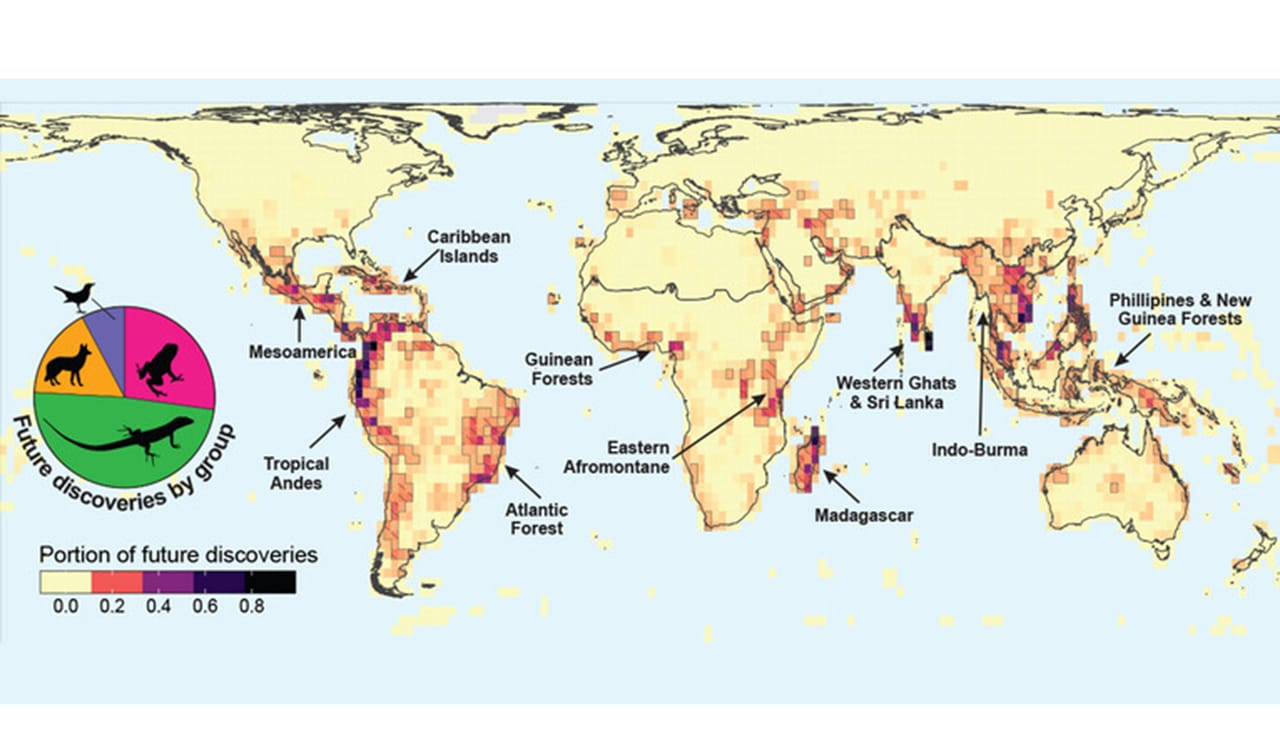
Much of biodiversity remains undiscovered, causing species and their functions to remain unrealized and potentially lost in ignorance. Using extensive species-level data in a time-to-event model framework, scientists from Yale identified taxonomic and geographic discovery gaps in terrestrial vertebrates.
Their investigation allowed them to extrapolate where and what sorts of obscure types of the four main vertebrate groups are destined to be yet recognized.
Scientists looked at 11 key factors, which allowed them to predict better locations where undiscovered species might be located. For instance, large animals with wide geographical ranges in populated areas are more likely to be discovered.
Walter Jetz, a professor of ecology and evolutionary biology at Yale, said, “At the current pace of global environmental change, there is no doubt that many species will go extinct before we have ever learned about their existence and had the chance to consider their fate. I feel such ignorance is inexcusable, and we owe it to future generations to rapidly close these knowledge gaps.”
Lead author Mario Moura, a former Yale postdoctoral associate in Jetz’s lab and now a professor at Federal University of Paraiba said the new study shifts the focus from questions like “How many undiscovered species exist?” to more applied ones such as “Where and what?”
“Known species are the ‘working units’ in many conservation approaches; thus, unknown species are usually left out of conservation planning, management, and decision-making. Finding the missing pieces of the Earth’s biodiversity puzzle is, therefore, crucial to improving biodiversity conservation worldwide.”
According to conservative scientific estimates, only 10 to 20 percent of Earth species have been formally described.
Moura said, “The chances of being discovered and described early are not equal among species. For instance, the emu, a large bird in Australia, was discovered in 1790, soon after taxonomic descriptions of species began. However, the small, elusive frog species Brachycephalus guarani wasn’t discovered in Brazil until 2012, suggesting more such amphibians remain to be found.”
The study also revealed that Brazil, Indonesia, Madagascar, and Colombia hold the greatest opportunities for identifying new species overall, with a quarter of all potential discoveries. Unidentified species of amphibians and reptiles are most likely to turn up in neotropical regions and Indo-Malayan forests.
Anokey significant factor that scientists focused on is the number of taxonomists who are looking for them. And they tend to discover the ‘obvious’ first and the ‘obscure’ later.
Moura said, “We need more funding for taxonomists to find the remaining undiscovered species.”
Jetz noted, “But the global distribution of taxonomists is greatly uneven, and a map of undiscovered life can help focus new efforts. That work will become increasingly important as nations worldwide gather to negotiate a new Global Biodiversity Framework under the Convention of Biological Diversity later this year and make commitments to halting biodiversity loss.”
“A more even distribution of taxonomic resources can accelerate species discoveries and limit the number of ‘forever unknown’ extinctions.”
Scientists are further planning to expand their map of undiscovered life to plant, marine, and invertebrate species in the coming years. Such information will be help governments and science institutions grapple with where to concentrate efforts on documenting and preserving biodiversity.
Journal Reference:
- Shortfalls and opportunities in terrestrial vertebrate species discovery, Nature Ecology & Evolution (2021). DOI: 10.1038/s41559-021-01411-5
Continue reading The map of undiscovered life on Tech Explorist.
0 comments:
Post a Comment